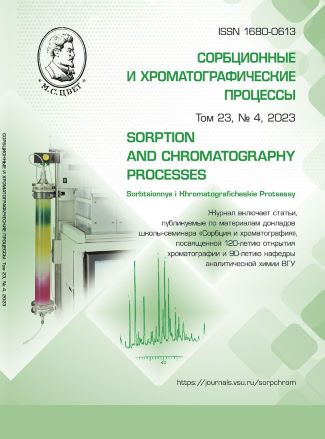Trends in the development of chromatographic methods and demand in pharmacopey practice
Abstract
Analysis of pharmaceutical products is carried out at all stages of its production and sale. The main tool for analytical control is the State Pharmacopoeia, which contains general pharmacopoeia articles describing legally recommended methods of analysis. This scientometric study was aimed at comparing the trends in the development of analytical science and the level of demand for various analytical methods in pharmacopoeial practice, assessing the dynamics of the development of chromatography and the introduction of its achievements into pharmaceutical analysis.
An analysis of Russian and foreign pharmacopoeias was carried out, it was determined when the developed methods of analysis are included in the list of regulated general pharmacopoeia articles; what methods of analysis are most often recommended in pharmacopoeial articles to determine the quality and authenticity of medicines. The data obtained are compared with the dynamics of the development of various areas of analytical science. Just 70 years ago, titrimetry was the main tool for analysts, but by 2000, the share of publications on chemical methods of analysis had decreased by about 30 times. The maximum number of publications devoted to spectral methods falls on the 70s of the last century. By the turn of the century, the number of papers on chromatography increased sharply. The share of articles on electrochemical methods of analysis did not change significantly by 2000, but their structure changed towards a significant increase in publications on electrochemical sensors. By 2000, the number of papers on electrophoretic and mass spectrometry (MS) methods, especially on chromato-mass spectrometry, had increased dramatically. By 2010, high-performance liquid chromatography took the first place among all methods of analysis, which has maintained its position since then, with increasing attention being paid to the tandem of MS and HPLC. An analysis of the private Russian Pharmacopoeias, starting from the 10th edition, as well as the International, European, US and UK Pharmacopoeias showed that if we generalize the average values of the frequency of mentioning various methods of analysis in pharmacopoeial articles, then among the instrumental methods of analysis in all primary sources by 2010, most often recommended optical and spectral methods (they account for an average of 55% - 65%), chromatography is 27-32%, the rest is electrochemical methods. Approximately the same ratio in the number of publications was observed in 2000. Thus, we can conclude that the introduction of analytical developments into pharmacopoeial practice lagged behind the peak of scientific interest in the corresponding method of analysis by about a decade. In the modern State Pharmacopoeia of the IX edition, chromatography occupies a leading position in terms of the number of recommendations, and HPLC is the most popular, which logically corresponds to the nature of the analyzed objects. This method is mainly used for the determination of related impurities, quantitative determination of the active substance and authentication.
Downloads
References
YAshin A.YA., Vedenin A.N., YAshin YA.I. Konferenciya «Pitkon» v 2012-2016 gg. ZHurnal analiticheskoj himii. 2016; 71: 1-3. (In Russ.)
YAshin A.YA., Vedenin A.N., YAshin YA.I. Naukometriya materialov konferencii PITTCON 2019. Metody, primeneniya, novye napravleniya. Laboratoriya i prizvodstvo. 2019; 3: 30-32. (In Russ.)
YAshin YA.I., YAshin A.YA., Vedenin A.N. Naukometriya materialov konferencii PITTCON 2020: metody, primeneniya, tendencii. Laboratoriya i proizvodstvo. 2020; 13(3-4): 70-72. (In Russ.)
Nesterenko P.N. Naukometricheskij vzglyad na puti razvitiya sovremennoj ana-liticheskoj himii. Laboratoriya i proizvodstvo. 2020; 15(6): 46-53. (In Russ.)







